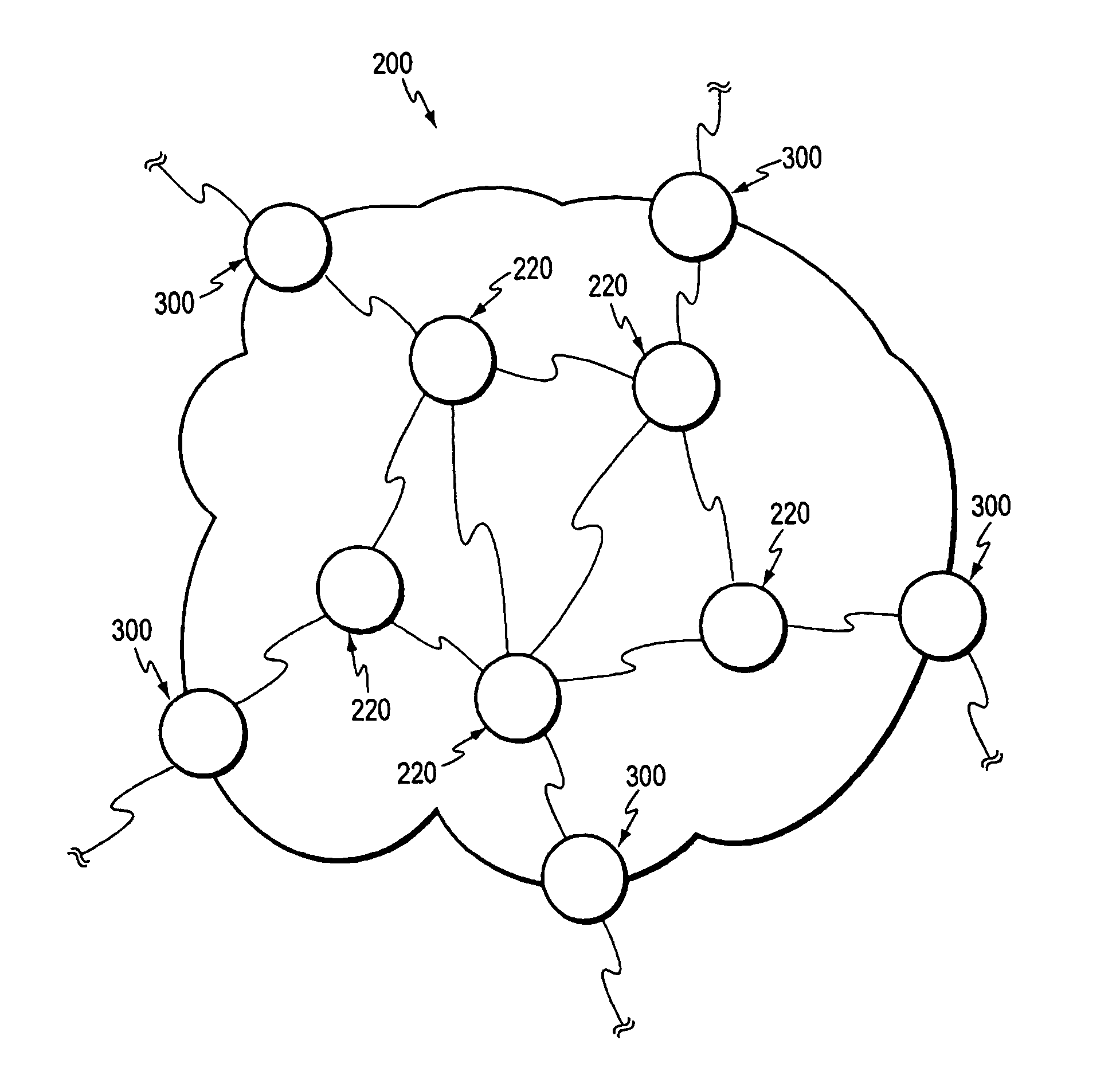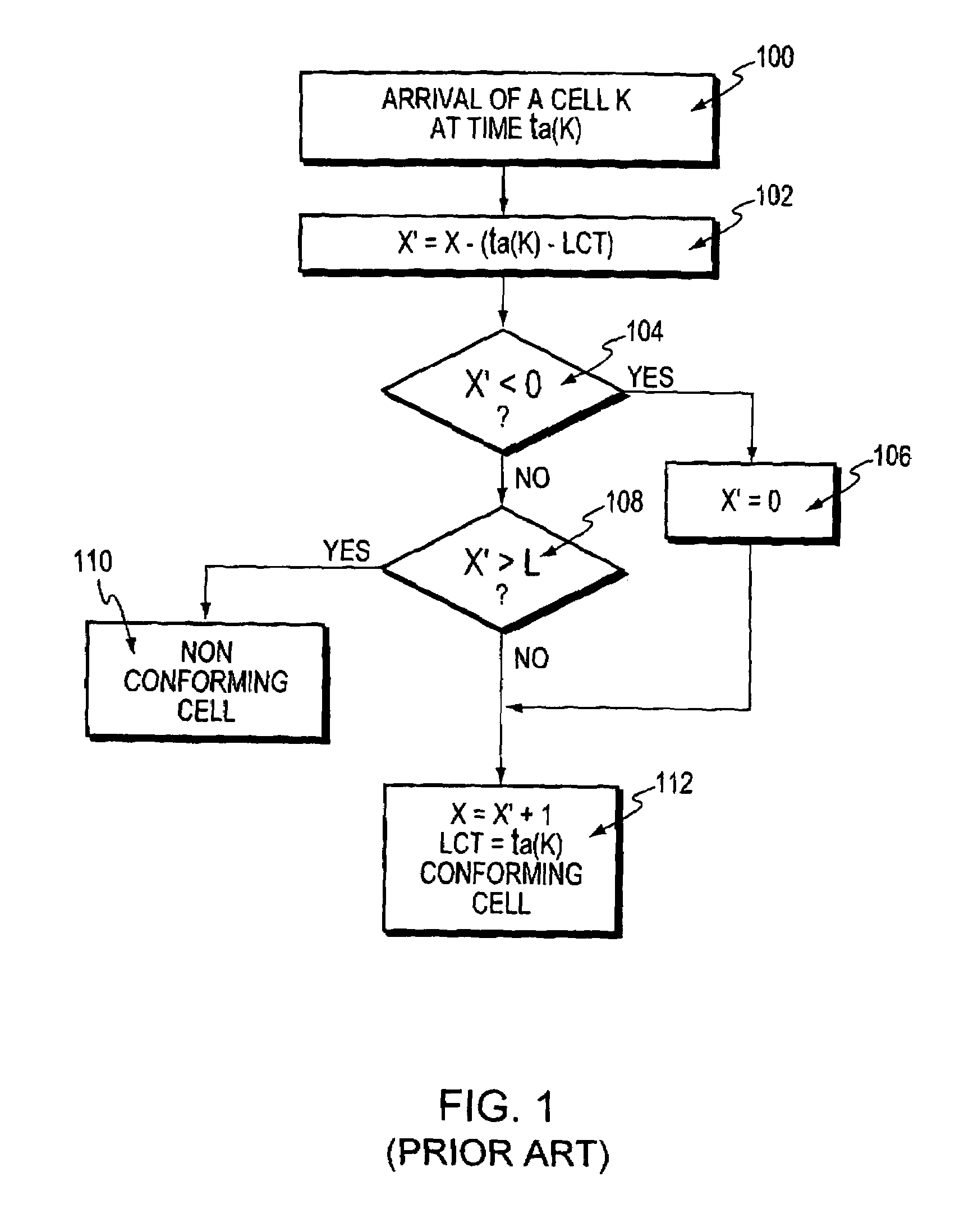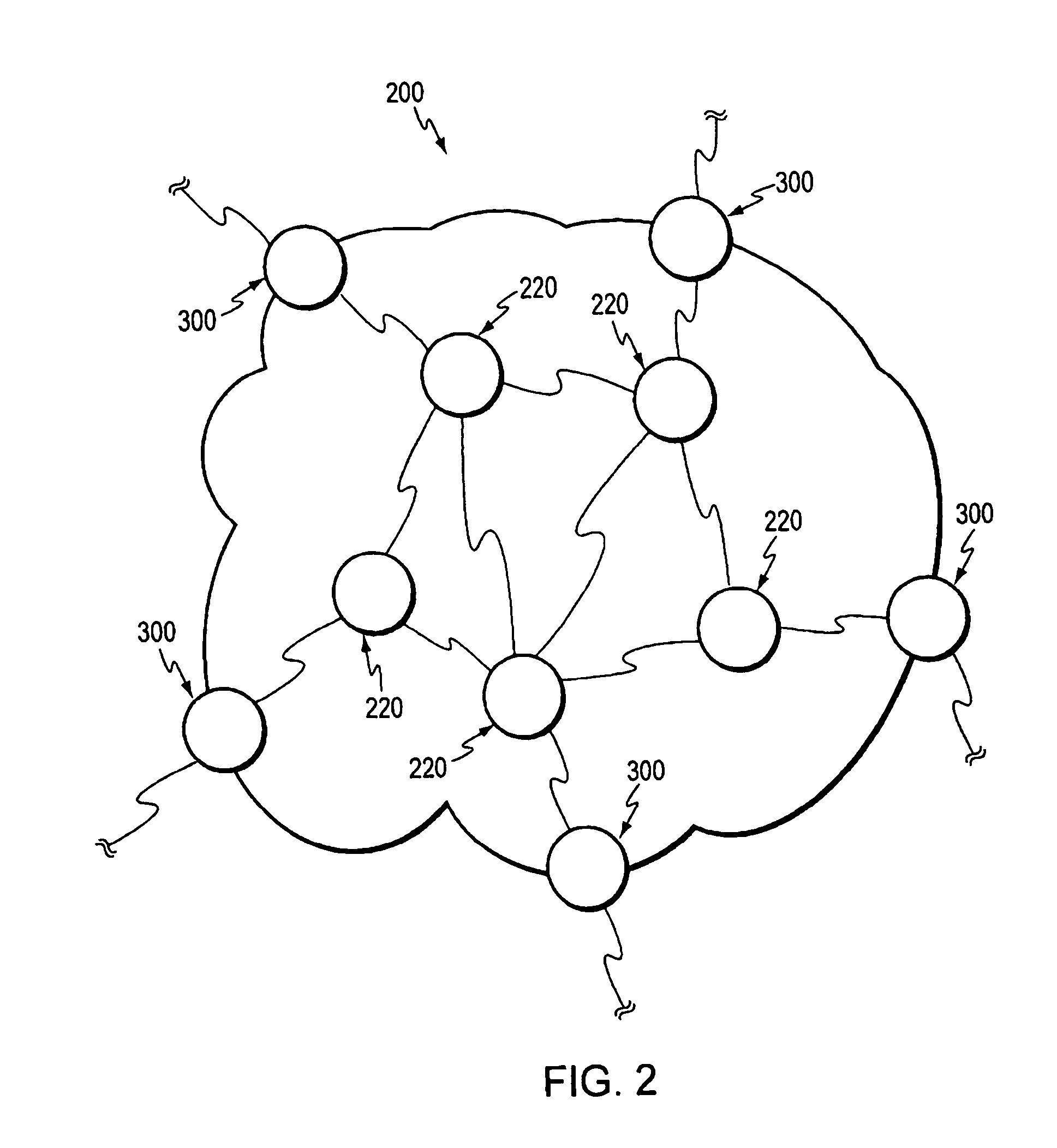Random early detection policer using randomization of packet drops
a packet drop and randomization technology, applied in the field of data traffic management, can solve the problems of congestion, limited resources generally available to an internet service provider (isp), and limited amount of bandwidth
- Summary
- Abstract
- Description
- Claims
- Application Information
AI Technical Summary
Benefits of technology
Problems solved by technology
Method used
Image
Examples
Embodiment Construction
[0022]An exemplary network 200 as shown in FIG. 2 illustrates a plurality of nodes 220, 300 such as routers that forward packets in the network to their various destinations. In one instance, nodes 300 at the outer edges of the network have policers that monitor the entering traffic. These policers detect violations in actual traffic flow as compared with a setup rate and penalize accordingly. In another instance, nodes 220 have policers that monitor the traffic entering the nodes. The policer in the node may regulate the traffic flow to ensure that the node does not get overflowed.
[0023]FIG. 3 illustrates a node such as a router 300 with a policer 400 that is constructed in accordance with the invention. For purposes of illustration, only one policer is shown although the router may have a plurality of policers that may police the traffic according to the entering packet classification, for example. The router 300 in its general form comprises a processing unit 312 and a memory uni...
PUM
 Login to View More
Login to View More Abstract
Description
Claims
Application Information
 Login to View More
Login to View More - R&D
- Intellectual Property
- Life Sciences
- Materials
- Tech Scout
- Unparalleled Data Quality
- Higher Quality Content
- 60% Fewer Hallucinations
Browse by: Latest US Patents, China's latest patents, Technical Efficacy Thesaurus, Application Domain, Technology Topic, Popular Technical Reports.
© 2025 PatSnap. All rights reserved.Legal|Privacy policy|Modern Slavery Act Transparency Statement|Sitemap|About US| Contact US: help@patsnap.com



